Overview
Have you ever wondered why vending machine prices can vary so much? It’s a bit like shopping for a car — there are a lot of factors at play. The type of machine, where it’s located, what products you’re offering, and even the costs of running it all come into play. Plus, things like market demand and competition can really shake things up.
Here’s the thing: understanding these factors can help you make smarter buying decisions. For instance, if you know that a certain location has high foot traffic, you might be willing to invest a bit more in a machine that can handle that demand. And let’s not forget about technology — it’s evolving fast, and keeping up can give you an edge.
So, what can you do with this info? Start by evaluating your own vending machine setup. Look at each of these elements and see where you can make adjustments. By doing this, you can improve your profitability and make your vending business work better for you. It’s all about being informed and making choices that align with your goals.
Introduction
Navigating the vending machine market can feel a bit like trying to find your way through a maze, right? With so many factors at play—like secure transactions, machine types, location, and what consumers really want—it's crucial to understand what influences those prices. If you’re looking to buy or sell, knowing these elements can open up some serious opportunities for profit.
But here’s the thing: staying competitive while managing costs can be tricky. How do you make sure you’re not just keeping up, but actually thriving? In this article, we’ll break down ten key factors that impact vending machine pricing. These insights can help you make informed decisions and maximize your returns. So, let’s dive in!
Vending Village: Secure Transactions and Verified Listings Impacting Prices
You know how it feels when you're about to make a purchase but you're not quite sure if you can trust the seller? That’s where Vending Village comes in. They guarantee that all listings are confirmed, which really helps when it comes to understanding the vending machines prices for dispensers.
By creating a secure marketplace, Vending Village boosts buyer confidence. When secure transactions are possible, it enables sellers to offer more competitive vending machines prices. Think about it: when buyers understand that verified sellers are associated with fair vending machines prices, they’re more likely to invest at higher price points. Why? Because the risk of fraud is minimized, and that’s a big deal.
This trust doesn’t just make buyers feel safer; it also helps create a more stable market atmosphere. Buyers are often willing to pay a little extra for that peace of mind. So, if you’re looking to buy or sell, consider checking out Vending Village. It’s a smart move that could save you money and hassle!
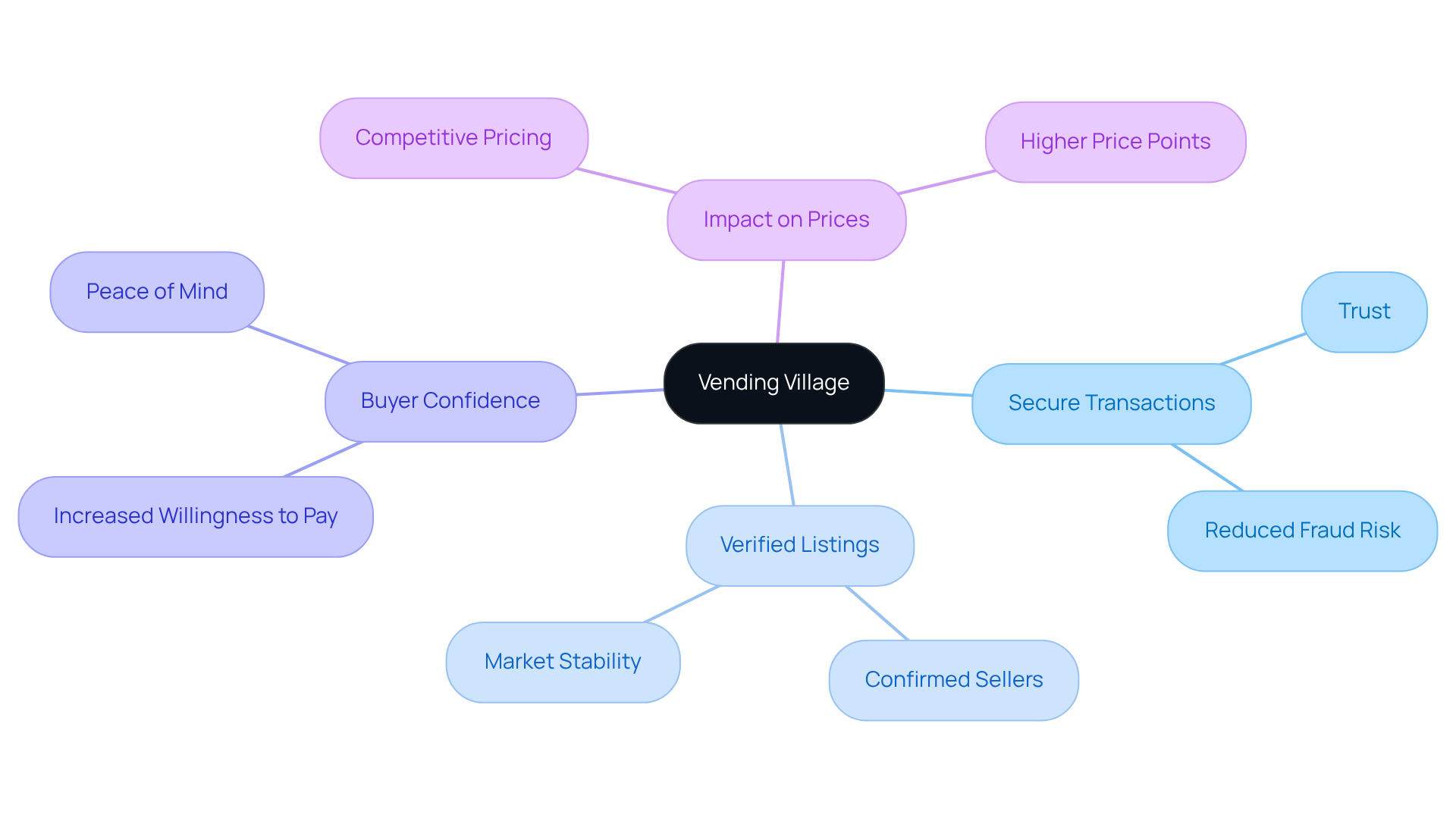
Machine Type: How Snack, Soda, and Specialty Machines Affect Pricing
You know how vending machines can be everywhere? Well, the type of machine really affects the vending machines prices and how much you can charge. Snack dispensers usually have lower prices, which draws in all kinds of folks looking for chips or candy bars. On the flip side, the prices of vending machines for soda often have higher price tags because people are always craving a drink, which can lead to better profit margins.
Now, if you’re thinking about specialty machines that offer organic or gourmet snacks, those can really hit the sweet spot for health-conscious buyers and often reflect higher vending machines prices. For instance, snack machines tend to give you better profit margins per item, while beverage units do well in busy spots, keeping sales steady.
Understanding these differences is key if you want to make smarter buying decisions and boost your profits. Plus, market research shows that combo machines, which mix snacks and drinks, can be super flexible. But here’s the thing: they might need a bit more attention to inventory to keep up with what customers want.
So, by aligning the type of vending machine with the right location and what your target audience prefers, you can really sharpen your sales strategy and stay competitive in this ever-changing market. What do you think? Ready to take a closer look at your options?
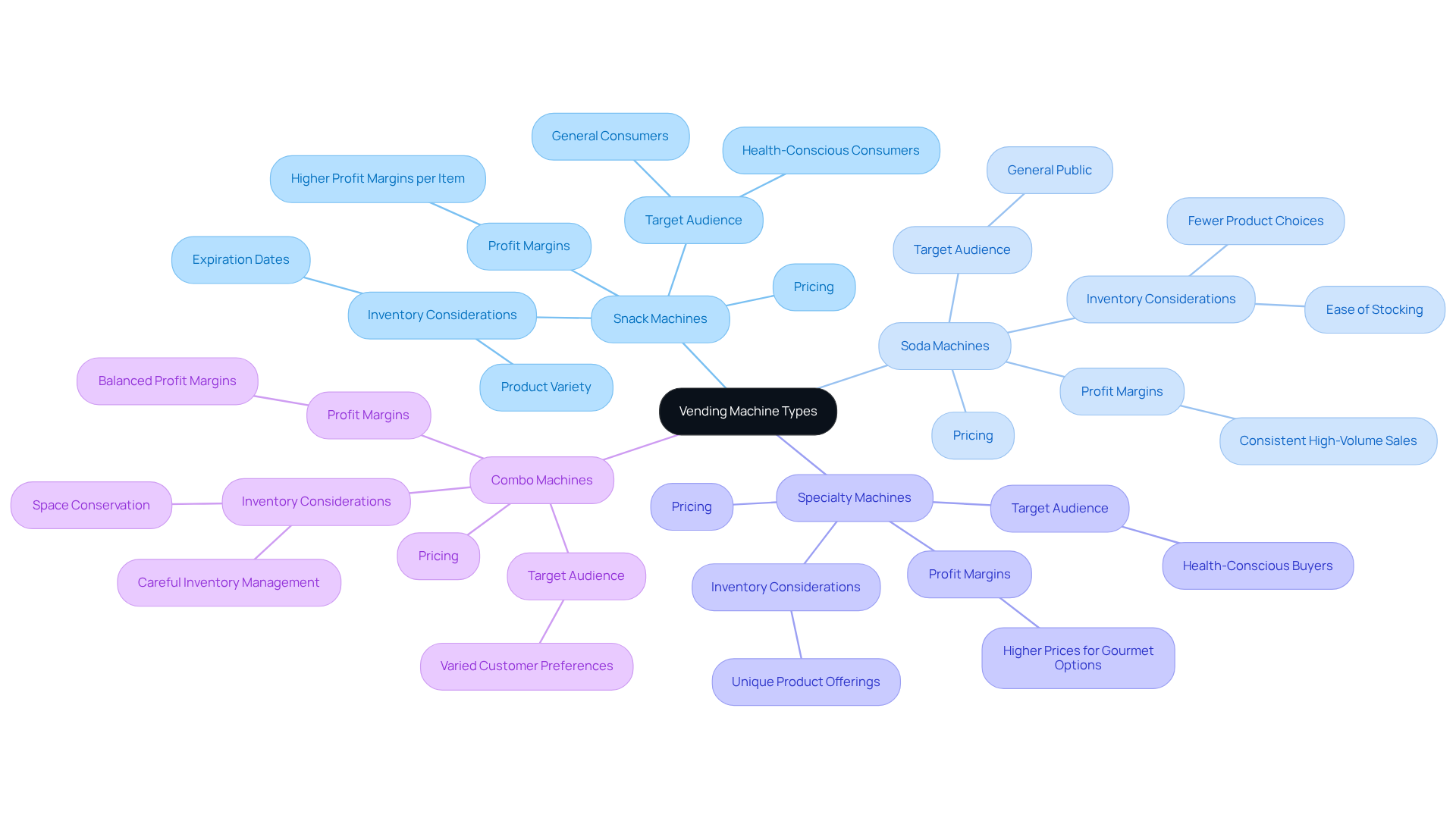
Location: The Role of Foot Traffic and Competition in Vending Prices
Think about where you place your vending machine. It really matters! If you set it up in a busy spot—like a shopping center or a packed office building—you’re likely to see more sales. That means you can charge a bit more for your snacks and drinks considering the vending machines prices.
However, if your machine is tucked away in a quiet corner, you may need to adjust your vending machines prices to attract more interest. It’s all about attracting those customers, right?
And don’t forget about competition! If there are other vending machines nearby, you might have to adjust your vending machines prices to stay in the game.
So, here’s the takeaway:
- Scout out high-traffic areas for your vending unit.
- Keep an eye on your competitors.
- Be ready to tweak your vending machines prices.
It’s a simple way to boost your sales!
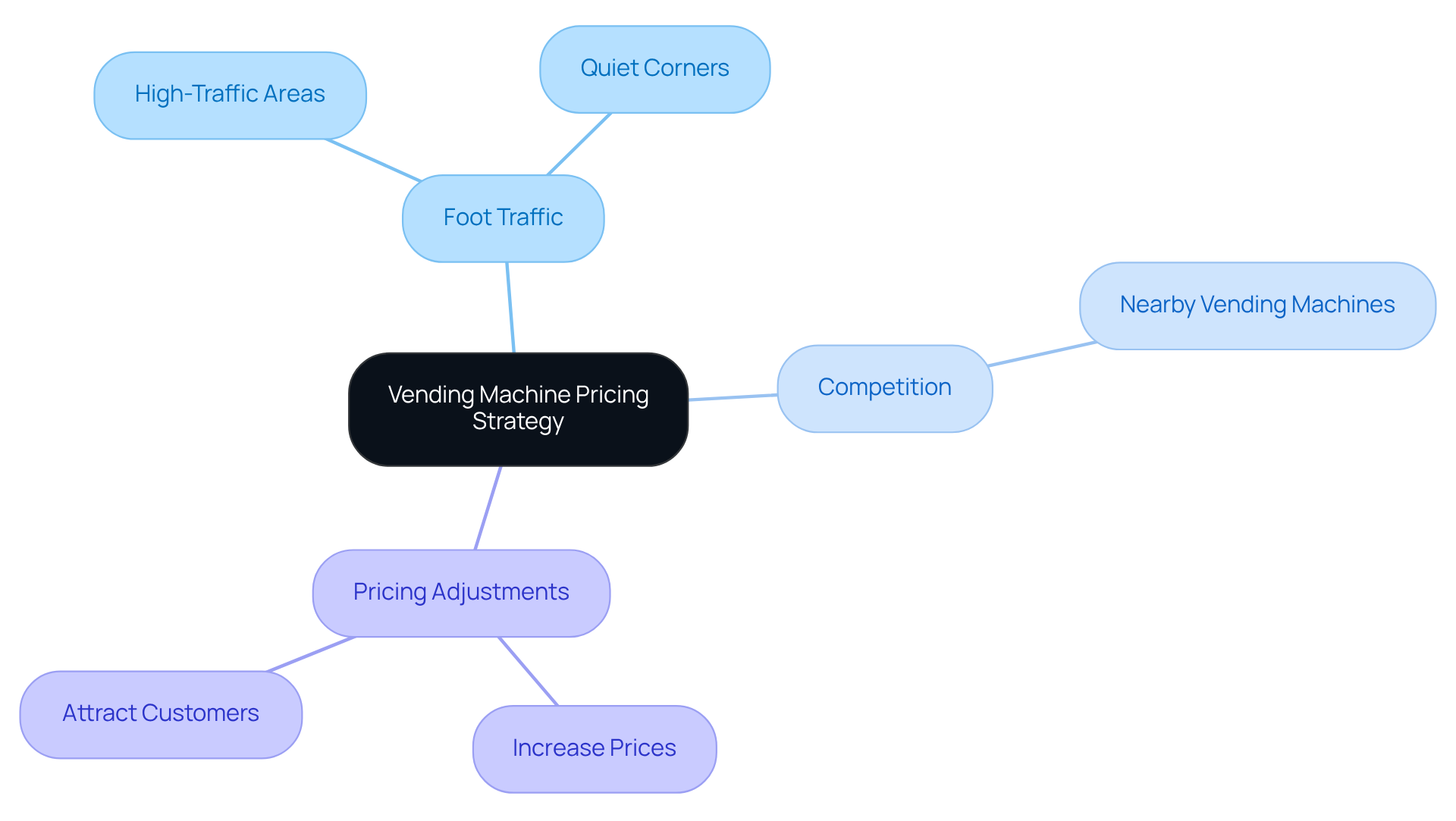
Product Selection: How Item Choices Influence Vending Machine Prices
Have you ever noticed how the vending machines prices can really change with the items inside? It’s true! Vending machines prices are usually higher for those stocked with popular snacks or drinks because they are likely to sell more.
But here’s the thing: if you mix in some nutritious options alongside those classic treats, you can attract a broader crowd. This not only helps you stand out but also enables you to set your vending machines prices more competitively.
So, what’s the takeaway? Understanding what your customers want is key. Keep an eye on trends and preferences to choose the right products. This way, you can maximize your profits while keeping your customers happy!

Operational Costs: Maintenance and Restocking Expenses Affecting Prices
You know how operational expenses can really hit your bottom line? Well, when it comes to vending machines prices, maintenance and restocking costs play a huge role. If a machine needs constant repairs or has high restocking costs, it often has to be priced lower to attract buyers. Those expenses can seriously eat into profit margins.
For instance, the vending machines prices can vary significantly, generating anywhere from $35 to $100 a week, depending on their location and the products they offer. But if operational costs are high, those profits take a hit. That’s why it’s so important to think carefully about vending machines prices. On the flip side, if you’ve got well-maintained machines with efficient restocking, you can set your vending machines prices a bit higher. They’re likely to bring in better returns on investment.
Here’s the thing: machines in busy spots usually sell more, which helps balance out those pesky expenses. This means managers can set competitive vending machines prices while still maintaining their profit margins. Plus, keeping a close eye on inventory management is key for both profitability and customer satisfaction in automated retail.
So, when you’re setting your rates, take a moment to really assess those operational expenses. It’s all about ensuring you stay profitable and competitive in the market.
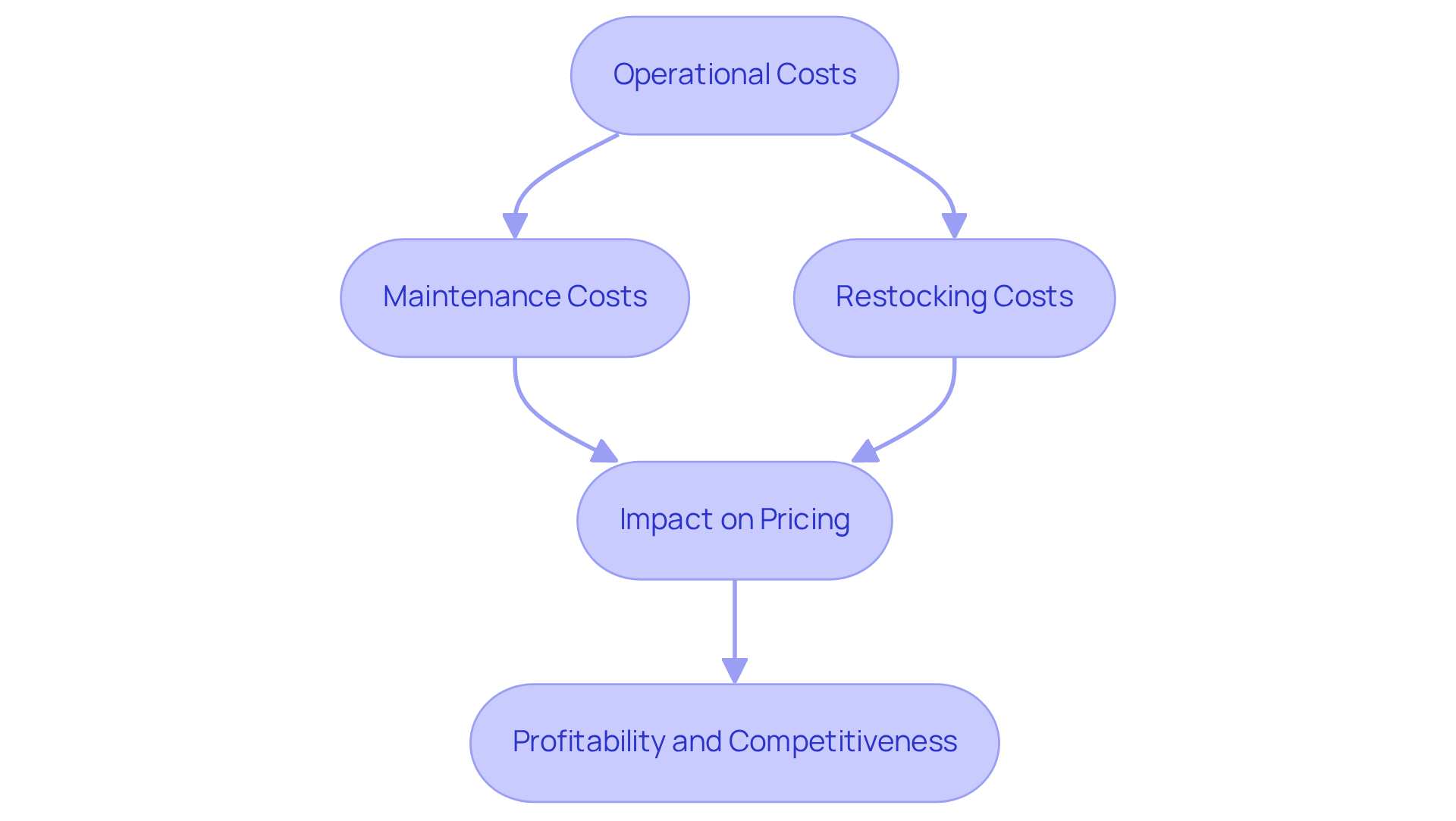
Licensing and Regulations: Their Impact on Vending Machine Pricing
When it comes to vending machines prices, licensing and regulatory requirements can really shake up your costs. Think about it: you’ve got to factor in the expenses for permits and local regulations, which can change a lot depending on where you are. For example, a general business license might set you back anywhere from $50 to $400, while food service permits can range from $100 to $1,000. These compliance costs can push businesses to rethink their pricing strategies, often leading to higher vending machines prices in order to cover these expenses. Plus, in some areas, you might need a sales tax permit, adding another $10 to $100 to your operational costs.
Here’s the thing: understanding the regulatory landscape is key to setting vending machines prices that remain both competitive and profitable. Case studies show that businesses that take the time to analyze their sites and negotiate good lease terms can manage these compliance costs better, which can really boost their profit margins. And it doesn’t stop there; ongoing compliance can eat up to 15% of your total operational costs, which can really impact your overall strategy.
So, what can you do? Stay informed about local regulations and their financial implications. By doing this, you can improve your cost structure and ensure your vending machine business remains profitable in the long run.
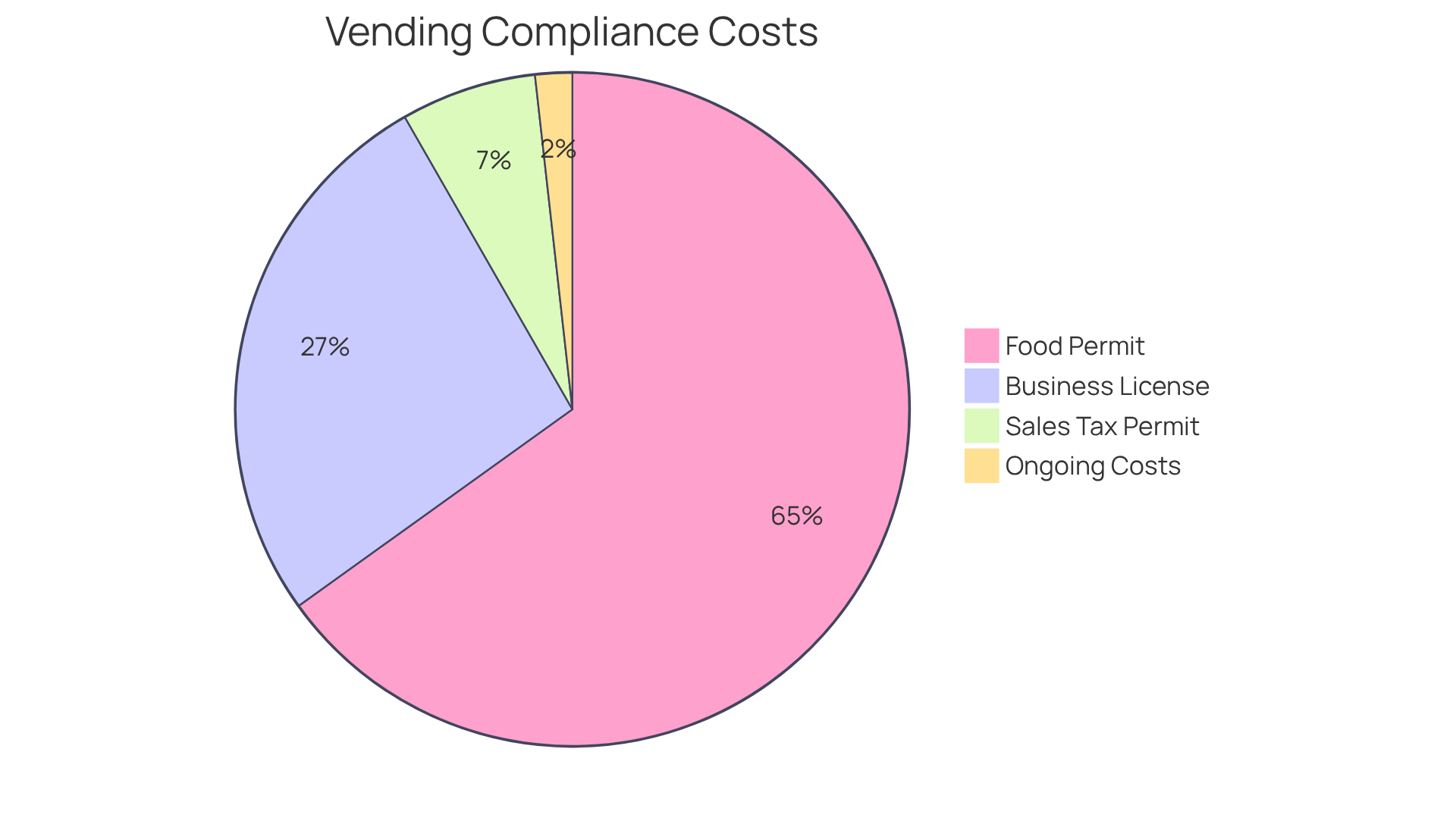
Market Demand: How Consumer Preferences Shape Vending Prices
You know how it goes—market demand really shapes the prices of vending machines. As what people want changes, it’s up to us to keep up. Take the rising interest in healthier snacks, for example. If you’re offering machines that cater to that trend, you might find the vending machines prices increasing. Why? Because you’re tapping into a health-conscious crowd that’s willing to pay a bit more.
Here’s the thing: staying on top of market trends and what consumers are after is key. It helps you set vending machines prices that accurately reflect what’s happening right now. So, keep your ear to the ground and adjust your offerings accordingly.
Want to stay ahead? Make it a habit to check in on what’s trending in the snack world. It’s a simple step that can really pay off!
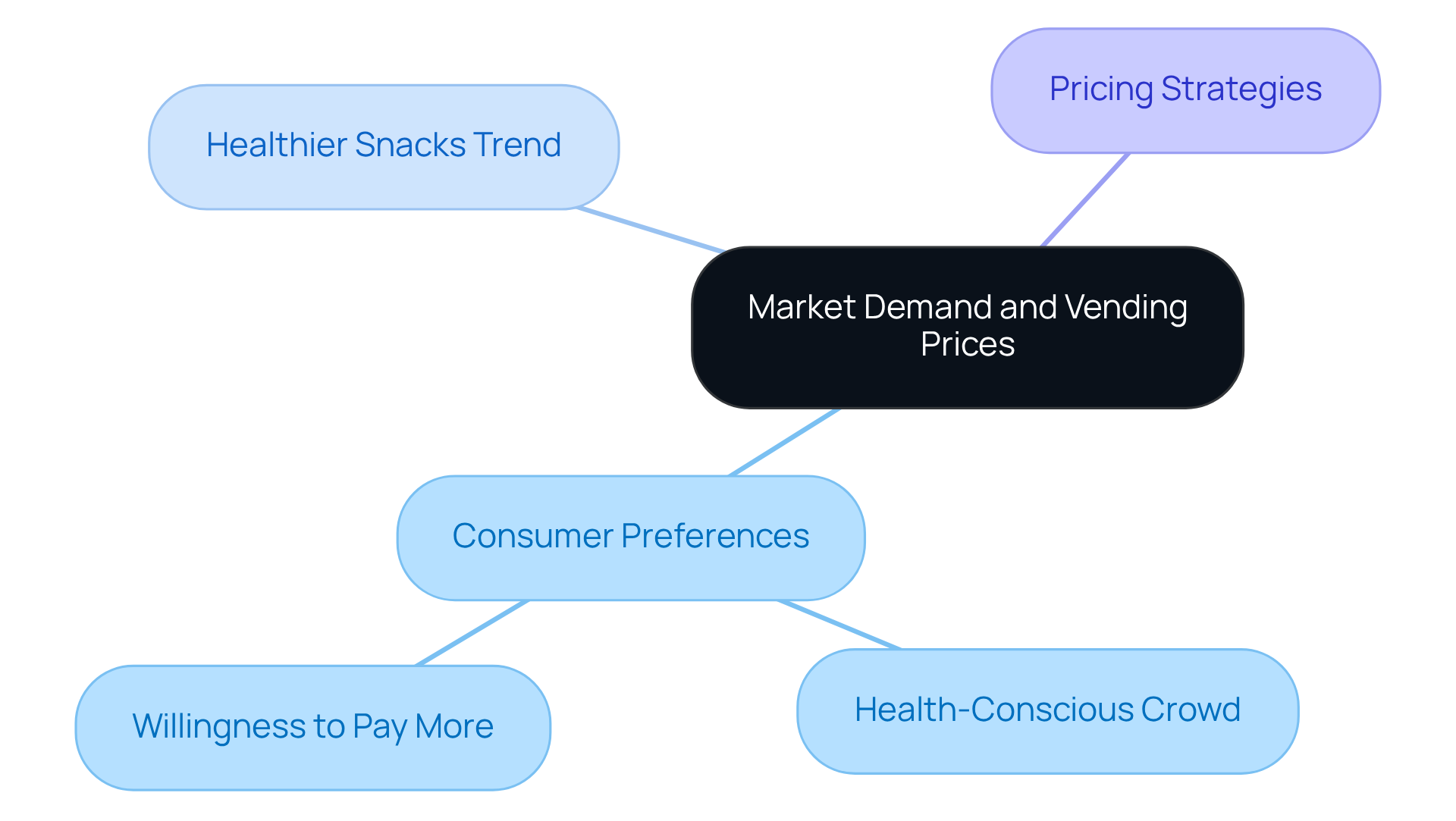
Competition: The Effect of Rival Operators on Vending Machine Pricing
You know how it goes—when there are a bunch of vending machines in one area, the competition can really heat up. Managers often have to lower their vending machines prices in order to attract customers. This creates a competitive landscape for vending machines prices.
On the flip side, in places where there aren’t many options, providers can set their vending machines prices a bit higher without worrying too much. Understanding this competitive environment is key for businesses. It helps them position their machines wisely and boost their profits.
So, here’s the thing: keep an eye on your local market. Understanding what your competitors are doing can provide you with the advantage to make smarter decisions about vending machines prices. It’s all about finding that sweet spot where you can attract customers while still making a profit.
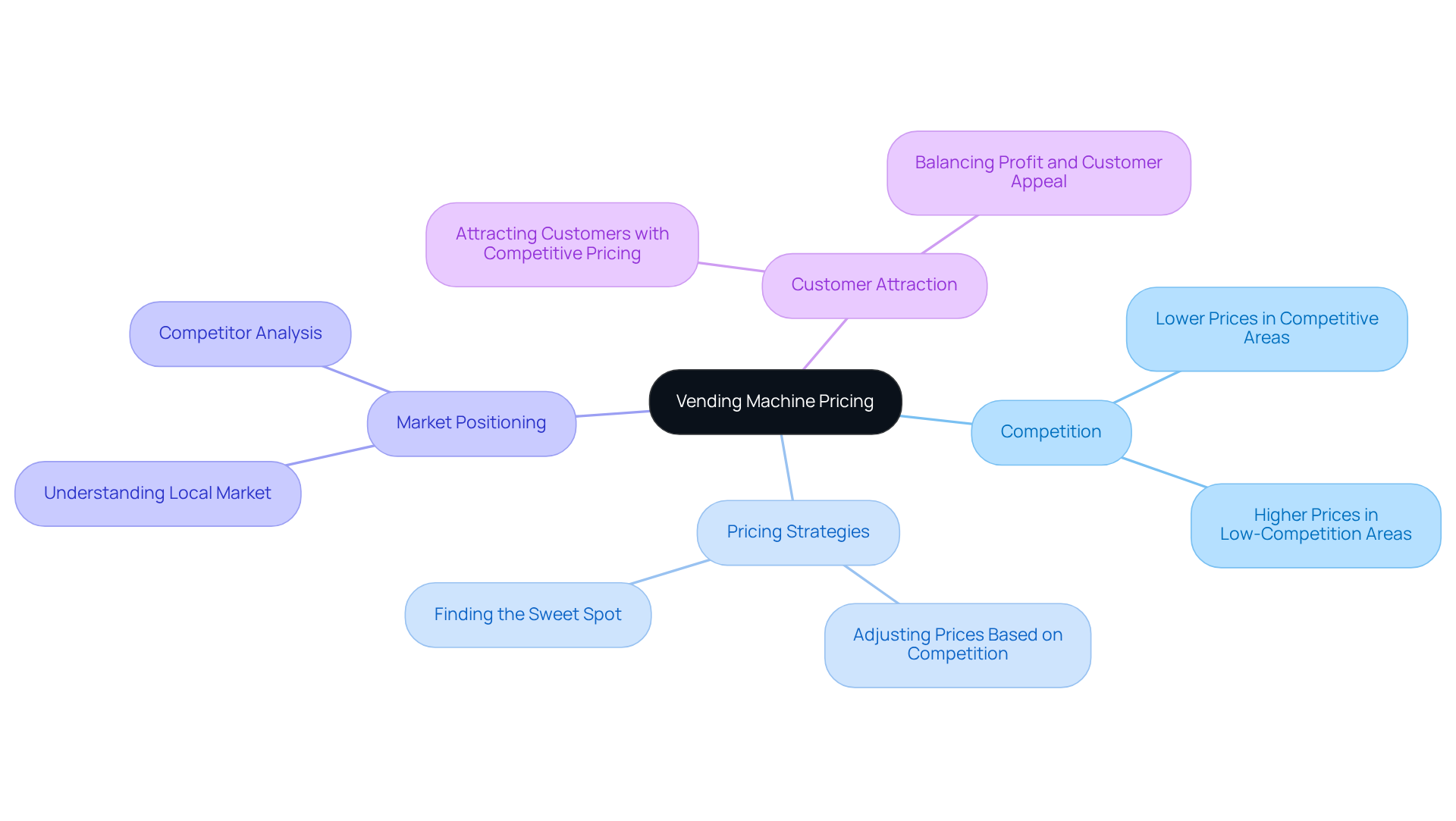
Technology: The Impact of Cashless Systems on Vending Machine Prices
Have you noticed how cashless payment systems are popping up in vending machines everywhere? It’s changing the game regarding vending machines prices. With modern payment tech, these machines can charge a bit more because, let’s face it, convenience is key for many of us.
Take Vending Village, for example. Their secure payment system ensures that transactions are safe, holding payments until both the buyer and seller confirm everything went smoothly. This not only protects consumers but also gives peace of mind to providers.
As cashless payments become the norm, businesses that embrace this trend might find they can justify higher vending machines prices. Customers are often willing to pay a little extra for the ease of use. In busy spots, a vending machine can rake in over $1,600 a month! That’s some serious profit potential.
Now, keep in mind that rental costs for these automated dispensers in high-traffic areas are expected to range from $200 to $500 each month in 2025. Therefore, it’s crucial for managers to weigh these financial factors, such as vending machines prices, when considering new tech.
Tajammul Pangarkar points out that the demand for rental units is on the rise, thanks to tech advancements and our growing preference for convenience. So, how can operators make the most of this trend? One smart move is to use tools like Vending Village’s location value calculator. It helps estimate potential earnings based on traffic and demographics, ensuring you’re optimizing your cost strategies and maximizing profits.
This focus on user safety and the innovative approach of Vending Village really meets the demand for a secure marketplace in automated retail. So, if you’re thinking about cashless systems, now’s the time to dive in!
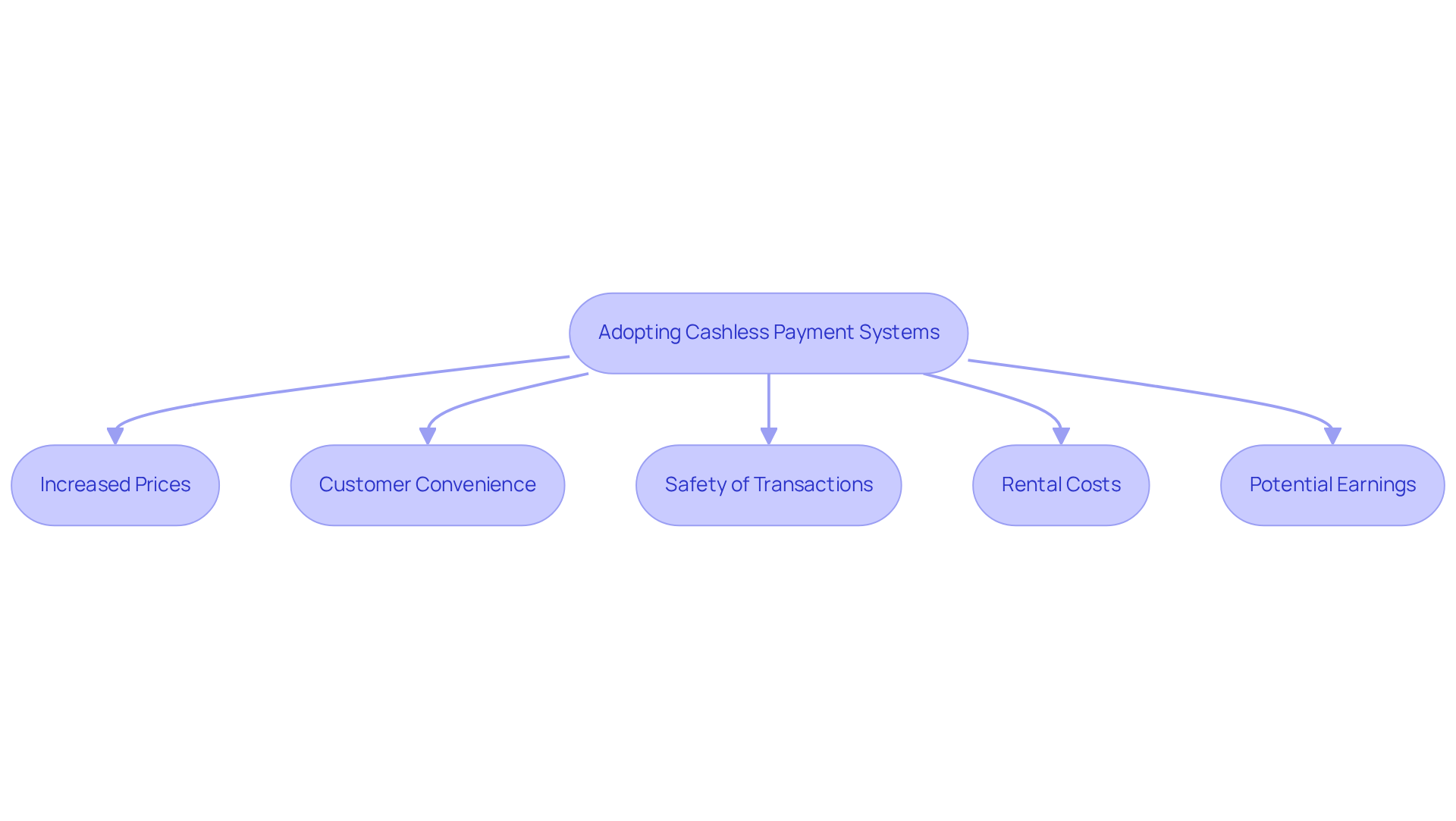
Economic Factors: How Inflation and Supply Chain Issues Affect Vending Prices
You know how inflation and supply chain issues can really shake things up? Well, they significantly influence the vending machines prices of automatic merchandise dispensers. When inflation hits, operators often have to tweak their prices just to keep things profitable. Take the United States Brain Training Apps Market, for example. It’s expected to jump from USD 1.2 billion in 2024 to USD 3 billion by 2033. That’s a clear sign that costs are on the rise across the board.
Now, let’s talk about supply chain challenges. They’ve been causing some serious headaches, leading to higher expenses for essential components. This, of course, affects the vending machines prices for automated retail products. A case study showed that vendors faced delays and increased capital costs, which forced them to rethink their pricing strategies for vending machines prices to stay competitive. This ties in with another study called 'Global Economic Factors Affecting Vending Machines,' which highlights how these disruptions can slow down rollouts and increase vending machines prices for vending machine vendors.
So, what does this mean for you? It’s crucial to keep an eye on economic trends. Changes can directly affect how consumers spend and what products are available. For instance, during inflationary times, people tend to be more price-sensitive. This might push businesses to offer a mix of budget-friendly and luxury items to cater to different tastes.
Insights from the study 'Consumer Expectations and Pricing Strategies' show that consumers are increasingly looking for convenience and healthier options. This shift can really impact your pricing strategies. By staying tuned into these dynamics, you can make smart pricing decisions that fit the current market, keeping your offerings appealing and profitable.
So, here’s the takeaway: Stay informed about economic trends and consumer preferences. It’s all about making choices that keep your business thriving!
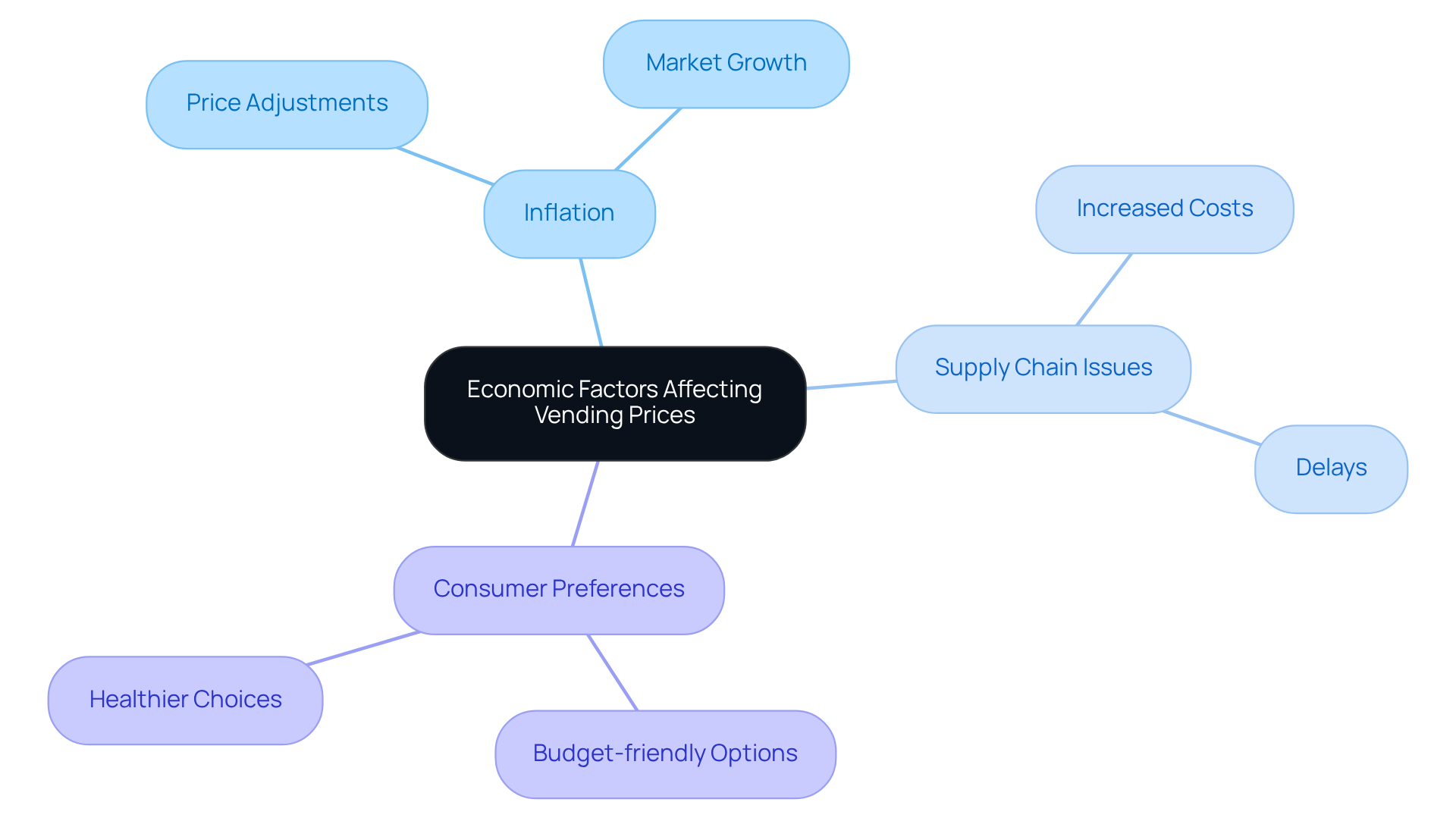
Conclusion
You know, understanding what drives vending machine prices is super important if you're in this game. Think about it: the type of machine, what products you choose, where you place it, and even who your competition is—all these factors really shape how much you can charge. And let’s not forget about outside influences like economic trends and tech advancements, like cashless payment options, which can really shake up your pricing strategy.
Here’s the thing: the insights we’ve talked about show just how crucial it is to stay in the loop about market trends, what consumers want, and your operational costs. By keeping an eye on things like foot traffic, competition, and what products are hot, you can make smart pricing choices that boost your profits and keep your customers happy.
But the good news is, staying updated on trends and being flexible with changes in the market is key to thriving in the vending machine industry. Whether it’s using secure payment platforms like Vending Village or understanding how economic shifts affect your business, taking a proactive stance will help you stay competitive and appealing to your customers. So, let’s embrace these insights and fine-tune your pricing strategies to drive growth in this ever-changing market!
Frequently Asked Questions
What is Vending Village and how does it impact vending machine prices?
Vending Village is a secure marketplace that guarantees all listings are confirmed, which boosts buyer confidence and allows sellers to offer more competitive vending machine prices. This minimizes the risk of fraud, encouraging buyers to invest at higher price points.
How does buyer trust affect vending machine prices?
When buyers trust that sellers are verified and associated with fair prices, they are more willing to pay a little extra for the peace of mind. This trust contributes to a more stable market atmosphere and can lead to higher sales.
What types of vending machines are there and how do they affect pricing?
There are snack dispensers, soda machines, and specialty machines. Snack machines typically have lower prices, soda machines often have higher prices due to consistent demand, and specialty machines can reflect higher prices for organic or gourmet options.
Which vending machines provide better profit margins?
Snack machines generally offer better profit margins per item, while beverage units perform well in busy locations, ensuring steady sales.
What is the significance of location in vending machine pricing?
The location of a vending machine is crucial; placing it in high-traffic areas can lead to more sales and allow for higher pricing, while machines in quieter areas may need to lower prices to attract customers.
How does competition affect vending machine pricing?
If there are other vending machines nearby, you may need to adjust your prices to remain competitive and attract more customers.
What strategies can improve vending machine sales?
To boost sales, scout high-traffic areas for your vending unit, monitor competitors, and be prepared to adjust your vending machine prices accordingly.
List of Sources
- Vending Village: Secure Transactions and Verified Listings Impacting Prices
- Vending Machine Profit Statistics Statistics: ZipDo Education Reports 2025 (https://zipdo.co/vending-machine-profit-statistics)
- 10 Key Factors Influencing Smart Vending Machine Price (https://blog.vendingvillage.com/10-key-factors-influencing-smart-vending-machine-price)
- How Much Is a Smart Vending Machine? | Primi Digital (https://primidigital.com/how-much-is-a-smart-vending-machine)
- Vending Machine Statistics and Facts (2025) (https://news.market.us/vending-machine-statistics)
- Machine Type: How Snack, Soda, and Specialty Machines Affect Pricing
- Is Raising Prices on Vending Machines a Good Idea? (https://dfyvending.com/raising-prices-vending-machines)
- Deciding Between Snack Machines and Drink Machines (https://globalvendinggroup.com/blog/deciding-between-snack-machines-and-drink-machines)
- How Do You Choose Between Snacks vs. Drinks Machines? (https://dfyvending.com/snack-vending-machines-vs-drink)
- Operational Costs: Maintenance and Restocking Expenses Affecting Prices
- How Much Do Vending Machines Make? | TCN Vending (https://tcnvending.com.au/how-much-do-vending-machines-make)
- Calculating Vending Machine ROI: A Step-by-Step Guide (https://dfyvending.com/calculate-vending-machine-roi)
- How Much Is a Smart Vending Machine? | Primi Digital (https://primidigital.com/how-much-is-a-smart-vending-machine)
- Vending machine business plan: a step-by-step guide with examples (https://wix.com/blog/how-to-create-a-vending-machine-business-plan)
- Licensing and Regulations: Their Impact on Vending Machine Pricing
- What Are the Hidden Costs of Vending Machine Ownership? (https://dfyvending.com/hidden-costs-vending-machines)
- Vending Machine Cost Breakdown: Features That Impact Pricing (https://blog.cloudpick.ai/vending-machine-cost-breakdown-pricing-factors)
- Technology: The Impact of Cashless Systems on Vending Machine Prices
- Vending Machine Rental: Key Strategies for Success and Profitability (https://blog.vendingvillage.com/vending-machine-rental-key-strategies-for-success-and-profitability)
- Economic Factors: How Inflation and Supply Chain Issues Affect Vending Prices
- Exploring the Dynamics of Solid Vending Machine: Key Insights and Trends for 2033 (https://linkedin.com/pulse/exploring-dynamics-solid-vending-machine-key-insights-qeonf)
- Exploring the Dynamics of Vending Machines: Key Insights and Trends for 2033 (https://linkedin.com/pulse/exploring-dynamics-vending-machines-key-insights-trends-2033-i3aoc)




